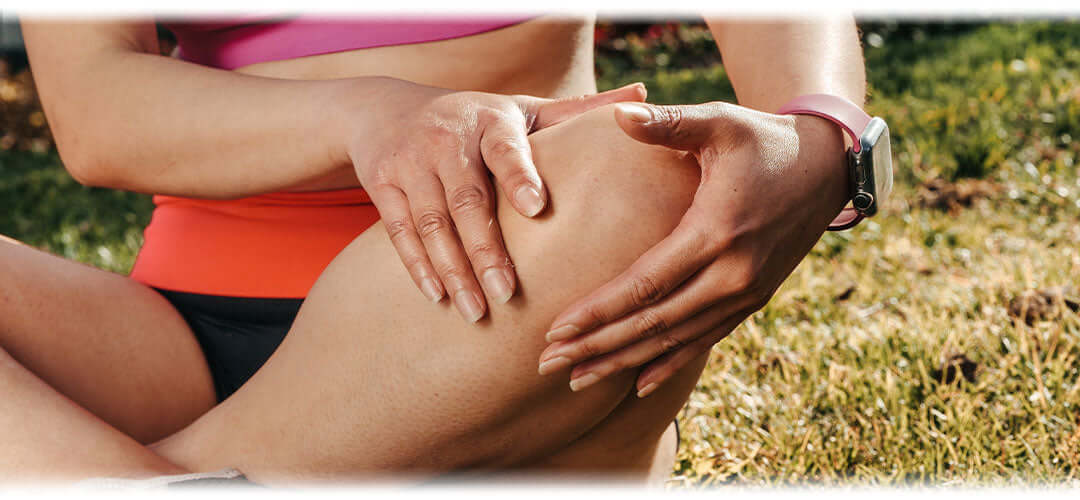
If you want to enjoy a happy, healthy lifestyle, then good joint health is crucial.
If your joints are weakened or cause you pain when moving, it can prevent you from enjoying some of the things you take for granted, such as walking, running, cycling or swimming.
Poor joint health can also have longer-term implications, reducing your quality of life and leading to chronic or debilitating pain.
While there are many different types of joint pain, most are down to either wear and tear, injury or arthritis. Here, we look at the most common causes of joint pain and how you can avoid it.

• What Causes Joint Pain?
The number one cause of joint pain in the UK is arthritis. It’s a common condition that affects around 10 million people in the UK. The two most common types of arthritis are osteoarthritis and rheumatoid arthritis.
Osteoarthritis affects the most people – almost nine million – most of whom are in their mid-40s or older. It affects more women than men. It causes the smooth cartilage lining of a joint to thin out and become rough. Once this happens, it causes pain and stiffness and makes the joint’s natural movement more difficult.
Meanwhile, rheumatoid arthritis is an autoimmune condition that affects around 400,000 people in the UK. It causes the body’s immune system to attack the cells lining the joints, making them swollen, stiff and painful. Over time, this can lead to joint, cartilage and bone damage.
If you get pain in several joints, especially your knees, hips, wrists or elbows, chances are it’s down to arthritis.
However, bone conditions including spondylitis and spondylosis; fibromyalgia, which causes muscle, ligament and tendon pain; or lupus, an autoimmune disorder that affects the organs and tissues, can also cause joint pain. If you suffer pain in a single joint, it’s probably down to something other than arthritis.
If you have previously injured the joint and it suddenly becomes painful again, the tissue lining the joints and tendons could be inflamed. This doesn’t usually cause redness or heat, but your joint can feel stiff or painful when you move it.
If the skin over the joint is hot and red, and the pain comes in waves, you could be suffering from gout. This usually affects the joint of your big toe first but can spread to other joints.
Diets rich in fatty foods, especially dairy products and red meat, and excess alcohol consumption, can speed the development of gout.
Cartilage damage caused by a fall or injury can also restrict the full range of movement in a joint and cause pain. You can treat this with anti-inflammatory medication or, in worse cases, surgery.
And bleeding into the joint space, usually following an injury, is another cause of joint pain. It is generally accompanied by swelling, warmth and redness or bruising.

• What Are The Symptoms Of Joint Pain?
The symptoms of joint pain can vary, from a dull ache caused by a previous injury to sudden, chronic pain.
You can ease the symptoms of most cases of joint pain at home using natural joint supplements or over-the-counter medication. But you should see a doctor if it doesn’t die down after a few days, or you experience other symptoms. These could include swelling, soreness, redness or heat around the joint, and feeling feverish.
If you’ve suffered a serious injury, your joint becomes immobile, or you are in severe pain, you should go to A&E.
• 
• How To Avoid Joint Pain
Exercise and eating well are the keys to keeping your bones and joints healthy and avoiding joint pain caused by illness or injury. The two vital ingredients you need to ensure you get enough of are Calcium and Vitamin D.
Calcium strengthens your bones, teeth and joints, while Vitamin D helps your body absorb Calcium and prevents your bones from thinning. There are many natural sources of both.
Most dairy products, such as milk, yoghurt and cheese, are rich in Calcium – just don’t overdo the creamy, high-fat cheeses, as it can lead to the onset of gout.
Many cereals are also fortified with Calcium to help promote healthy bone and joint development. And when it comes to Vitamin D, fatty fish and dark, leafy greens are the things you should be eating. Spending your time in the sunshine will also help – just don’t forget the hat and the sun cream.
Unfortunately, if you have developed arthritis, it can neither be prevented nor cured. However, there are several things you can do to manage the condition and slow its progress.
This can include getting more exercise, maintaining a healthy weight and using support bandages or devices to reduce the strain on your joints during certain activities.
Improving your posture when doing something requiring repetitive movements, such as typing or operating machinery, can also help.
And there are certain natural supplements you can take, like EverFlex, which help strengthen cartilage and replenish it with the nutrients it needs – such as glucosamine and chondroitin – to keep your joints healthy.
While old age comes to us all, the key to managing joint pain is not to let it dictate your life. Instead, staying active will help keep your joints supple, so you can continue to enjoy your favourite physical activities and maintain your quality of life.
Check out these links to find out more:
Disclaimer:
Information and other content provided in Lily & Loaf blogs should not be construed as medical advice and should not be considered a substitute for professional medical expertise. If you have any medical concerns, you should consult with your health care provider.


